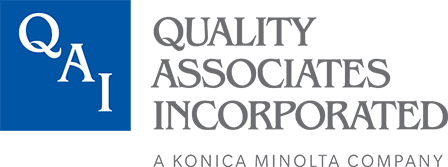The transition from paper-based processes to digital solutions isn’t just a trend—it’s becoming necessary for survival and growth in our increasingly digital world. Records modernization has emerged as a critical initiative that extends far beyond simple compliance requirements, touching every aspect of how organizations operate and compete.
Beyond Compliance: The Strategic Imperative of Records Modernization
Many organizations, particularly government agencies, are familiar with mandates like M-19-21 and its extension M-23-07, which establish digital and paperless operations as the standard moving forward. These directives set clear deadlines for the transition to electronic records management, pushing organizations to rethink their approach to information.
However, viewing records modernization as a compliance exercise misses the bigger picture. A records modernization initiative allows you to completely reimagine how information flows through your organization and how paper-based processes can be automated to drive efficiency and innovation.
Efficiency Gains Through Digitization
The process of digitizing paper records delivers immediate operational benefits. Physical documents require storage space, are vulnerable to damage or loss, and create inefficiencies when staff need to locate specific information. Document scanning services transform these physical assets into searchable digital resources that can be instantly accessed from anywhere, dramatically reducing the time spent looking for information.
Modern electronic records management solutions incorporate workflow automation, enabling organizations to streamline processes that previously required manual input. Tasks like approval processes, information sharing, and collaboration become seamless when built on a foundation of appropriately digitized records. This efficiency translates directly to cost savings and improved productivity across the organization.
Building a Foundation for Digital Transformation
A robust record management system is more than just storage—it’s the backbone of any successful digital transformation initiative. Organizations looking to implement artificial intelligence, robotic process automation, and machine learning solutions quickly discover that these technologies require properly structured, accessible data to function effectively.
Without comprehensive digitization of legacy records, as well as an effective strategy for managing new information, organizations cannot fully leverage these transformative technologies. The journey to intelligent automation begins with having your information housed, and in order, using electronic records management.
Core Elements of a Modern Records Modernization Strategy
A successful records modernization approach should incorporate several key elements:
- Comprehensive Digitization: Implement document scanning services that handle various media types while maintaining quality and accessibility. This includes basic scanning and image enhancement, indexing, and quality control processes.
- Intelligent Classification: Apply metadata and categorization systematically to make information discoverable and enable compliance with retention policies.
- Lifecycle Management: Establish clear policies for how records move through their lifecycle from creation to eventual disposal, ensuring regulatory compliance while optimizing storage costs.
- Accessibility and Security: Balance the need for information to be readily available to authorized users with the appropriate security measures required to protect sensitive data.
- Integration Capabilities: Ensure your record management system can connect with other business applications to prevent information silos and enable seamless workflows.
Digitization as a Prerequisite for AI Initiatives
Even organizations without immediate plans for artificial intelligence implementation should recognize that digitizing paper records now is a prerequisite for future AI efforts. AI technologies rely on access to large volumes of structured, digital information to identify patterns, make predictions, and automate decisions.
Organizations that have already implemented comprehensive electronic records management find themselves at a significant advantage when they decide to explore AI applications. Their information is already accessible, searchable, and structured in ways that make it immediately usable for training and implementation of AI systems.
The Human Element of Records Modernization
While technology is central to modernizing records, the human component cannot be overlooked. Successful transformation requires stakeholder buy-in, training, and a clear communication strategy to help teams adapt to new working methods. Organizations should invest in change management alongside their technical implementation to ensure adoption and maximize the benefits of their modernization efforts.
Moving Forward
Records modernization is not simply about replacing paper with digital files—it’s about fundamentally transforming how information is captured, managed, and utilized throughout your organization. Organizations can ensure compliance by implementing a comprehensive approach to electronic records management while positioning themselves for greater efficiency, innovation, and competitive advantage in an increasingly digital marketplace.
As you embark on your records modernization journey, remember that the goal extends beyond compliance. You’re building the foundation for a more agile, intelligent, and responsive organization that can fully participate in the digital future.
Get More Information at the QAI Records Modernization Center:
[Created by a human with the assistance of ClaudeAI.]


